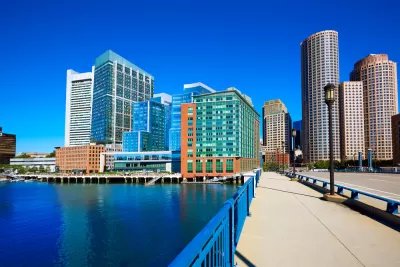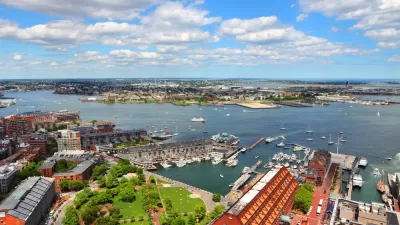The Boston waterfront has been booming, but the area is extremely vulnerable to climate change and rising sea levels. Measures to address those risks have come just recently.

The Seaport District of Boston has seen immense growth in the last decade, with construction of a slew of new office buildings, condominiums, and museums. But the area is prone to flooding, and projections show the problem will only get worse.
Yet developers and the city, eager to see the Seaport District transform, are just now moving to protect buildings from climate change threats. “Developers are elevating ground floors, putting electrical and other critical equipment on higher ones, and investing in salt water-resistant materials and flood barriers to protect garages and other vulnerable areas of buildings. Boston is planning a series of sea walls, berms, and other structures that will act like a barricade against Mother Nature,” write Prashant Gopal and Brian K. Sullivan.
Other cities, including New York and Miami, are also putting flood-protection measures into place. But observers of the Boston waterfront development say that building took precedence over planning for climate change. "No American city has left such a large swath of expensive new oceanfront real estate and infrastructure exposed to the worst the environment has to offer, according to Chuck Watson, owner of Enki Research, which assesses risk for insurers, investors, and governments,” note Gopal and Sullivan.
FULL STORY: Boston Built a New Waterfront Just in Time for the Apocalypse

Alabama: Trump Terminates Settlements for Black Communities Harmed By Raw Sewage
Trump deemed the landmark civil rights agreement “illegal DEI and environmental justice policy.”

Planetizen Federal Action Tracker
A weekly monitor of how Trump’s orders and actions are impacting planners and planning in America.

The 120 Year Old Tiny Home Villages That Sheltered San Francisco’s Earthquake Refugees
More than a century ago, San Francisco mobilized to house thousands of residents displaced by the 1906 earthquake. Could their strategy offer a model for the present?

In Both Crashes and Crime, Public Transportation is Far Safer than Driving
Contrary to popular assumptions, public transportation has far lower crash and crime rates than automobile travel. For safer communities, improve and encourage transit travel.

Report: Zoning Reforms Should Complement Nashville’s Ambitious Transit Plan
Without reform, restrictive zoning codes will limit the impact of the city’s planned transit expansion and could exclude some of the residents who depend on transit the most.

Judge Orders Release of Frozen IRA, IIJA Funding
The decision is a victory for environmental groups who charged that freezing funds for critical infrastructure and disaster response programs caused “real and irreparable harm” to communities.
Urban Design for Planners 1: Software Tools
This six-course series explores essential urban design concepts using open source software and equips planners with the tools they need to participate fully in the urban design process.
Planning for Universal Design
Learn the tools for implementing Universal Design in planning regulations.
Clanton & Associates, Inc.
Jessamine County Fiscal Court
Institute for Housing and Urban Development Studies (IHS)
City of Grandview
Harvard GSD Executive Education
Toledo-Lucas County Plan Commissions
Salt Lake City
NYU Wagner Graduate School of Public Service





























